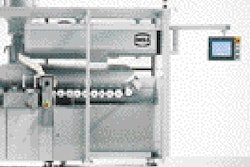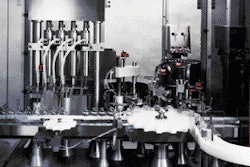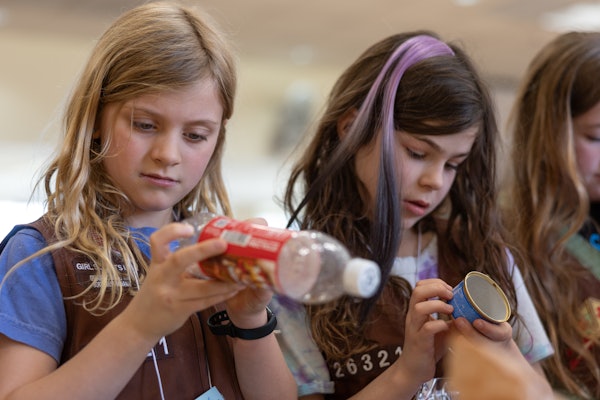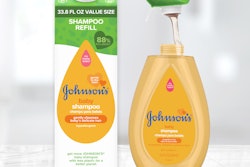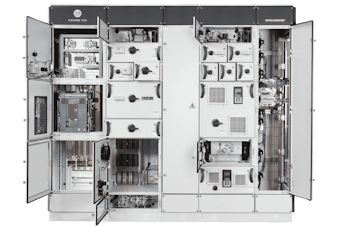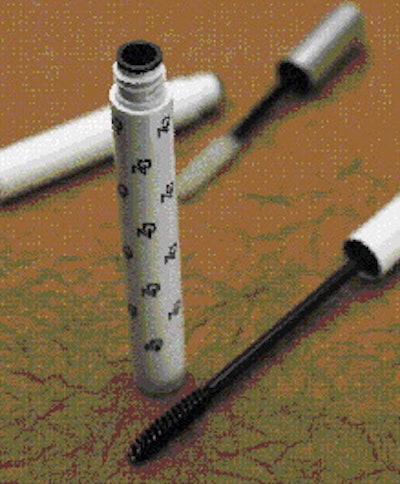
On a new mascara filling line at cosmetics manufacturer Davlyn Industries, Cranbury, NJ, a small and inexpensive machine vision system is performing 100% on-line inspection to confirm that a packaging component is present in plastic mascara tubes. While machine vision isn't new, economical machine vision is still a new game for most packagers. Especially for applications as challenging as this one (see related study on machine-vision applications, p. 114).
"The problem is that the mascara is dark, the wipers are dark, the brushes are dark and some of the containers are dark," says Frank Parker, maintenance manager. The machine vision system verifies the presence of a wiper in each mascara container, even though both may be black, for example. The wiper is a hollow plastic cylinder that removes excess mascara from the brush as the user withdraws it from the tube.
The cost of the machine vision system? "About $6ꯠ," says Ed Buklad, maintenance supervisor. That price included special lighting that Davlyn purchased for the application. "That's nickels and dimes compared to other systems, which we priced at $20ꯠ to $25ꯠ." Buklad is quick to point out that systems such as his won't do everything a $20ꯠ system does. But for many inspection tasks, including the wiper application, "I can't see a problem with it."
In use for about eight months, the Model F150 from Omron Electronics (Schaumburg, IL), represents one of the newest generation of economical machine vision systems. Many packagers starting to find inexpensive vision systems are starting to rewrite the price/performance equation (see Packaging World, Oct. '98, p. 138 or packworld.com/go/vision).
Better QA
The system's primary benefit is the iron-clad quality assurance that the component has been inserted, according to Buklad. "If our quality-control department opens up a couple of cartons and we find there are two with missing wipers, we have to perform 100% manual inspection on the entire lot," explains Buklad. "If we ran 20ꯠ pieces, somebody has to actually open 20ꯠ mascara containers and visually inspect them."
Quality control is crucial at Davlyn, since it produces product for private-label customers (that prefer not to be identified), as well as its own brand. Davlyn was filling the latter on the day of PW's visit.
The mascaras it produces sell for anywhere from $1 to $20 each. Regardless of selling price, "we don't want to have any product go out of our facility without a wiper," says Buklad. "We don't want to get a reputation that we don't provide quality packaging."
The system provides Davlyn other benefits, too:
* Lower labor costs. Previously, the line required one to two people solely for visual inspection. Those workers are now freed up for other lines. (Specific labor savings weren't available.)
* Faster line speed. Previously, manual inspection required Davlyn to slow the line down, especially after Davlyn's quality-control department discovered some packages without wipers. "We couldn't allow that to happen again, so we slowed the line down to about 28 containers a minute," says Buklad. Today the line runs at just over 50/min.
* Reduced labor and waste due to manual lot inspections. No more expensive manual inspections of entire lots have been required since the machine vision system has been used. That results in packaging material savings, too. "If we have to open sealed shippers [to manually inspect product], we don't reuse them," says Buklad.
* Room to grow. Currently, the machine vision system is snapping pictures of packages at a rate of close to one per second. According to Buklad, "The system could probably do 15 or 20 inspections in a second." (Omron says a rule of thumb is about 10 inspections per second; the actual number is more or less depending on how many images need to be stored in the unit, the size of the package being inspected and other factors.)
Small footprint
The machine vision system consists of a tiny camera about the size of an AC adapter that accompanies most consumer electronics devices. Also included is a light source, a lens and control electronics. The camera is small enough to be mounted right in the mascara filling/insertion machine. It's positioned over a rotary carousel that carries mascara tubes (in pucks) past the wiper-insertion station. The controls are in a box smaller than a toaster, that is mounted to the side of the machine. The control box is then wired back to the filler's programmable logic controller (also from Omron) in a control cabinet against the wall. The filling system itself was supplied by Airline Hydraulics (Bensalem, PA) based on a design supplied by Davlyn.
After the plastic mascara tubes are filled in-line four-up with about 7 g of product each, they are transferred onto a rotary carousel. There, wipers are mechanically inserted one per tube. Then, while the tubes are still in the rotary carousel, the camera snaps a picture of each partially completed package. It compares the captured image with that of an image of a preprogrammed correct package.
Containers that pass the inspection are transferred off of the rotary carousel to a downstream brush-insertion station. A rejected package remains on the carousel (thanks to a gate that blocks its exit) and cyles around again for another wiper insertion and inspection. The process requires no human intervention for containers rejected due to missing wipers.
Accuracy is high
The camera has never "passed" a bad container, says Buklad. It's able to pick up differences in the way the light hits the different surfaces of the brush and container, even though both may be the same color.
A few false rejects have occurred, he says, but these are few and far between. They're usually triggered by the black mascara itself on slightly overfilled containers. "We'd rather see that than to have one slip by without a wiper," says Buklad.
Setting up the vision system is simple, claims Buklad, and consists largely of "showing" the camera what a good package and a bad package look like. It stores both programmed images in its memory, ready for comparison to images it captures of packages on the line. Assistance in setting up the system was provided by Omron and Airline Hydraulics, which is the local distributor for Omron.
With its first low-cost vision application under its belt, Davlyn is beginning to evaluate many other packaging applications that can benefit from a similar system. "We're going to look at using [vision] to make sure that labels are placed where we want them. We'll also try to identify other applications where we're doing visual inspections," says Buklad.
Concludes Parker: "We use a lot of Omron components, including PLCs and sensors. Airline and Omron have supported us 100 percent on everything we've done."
